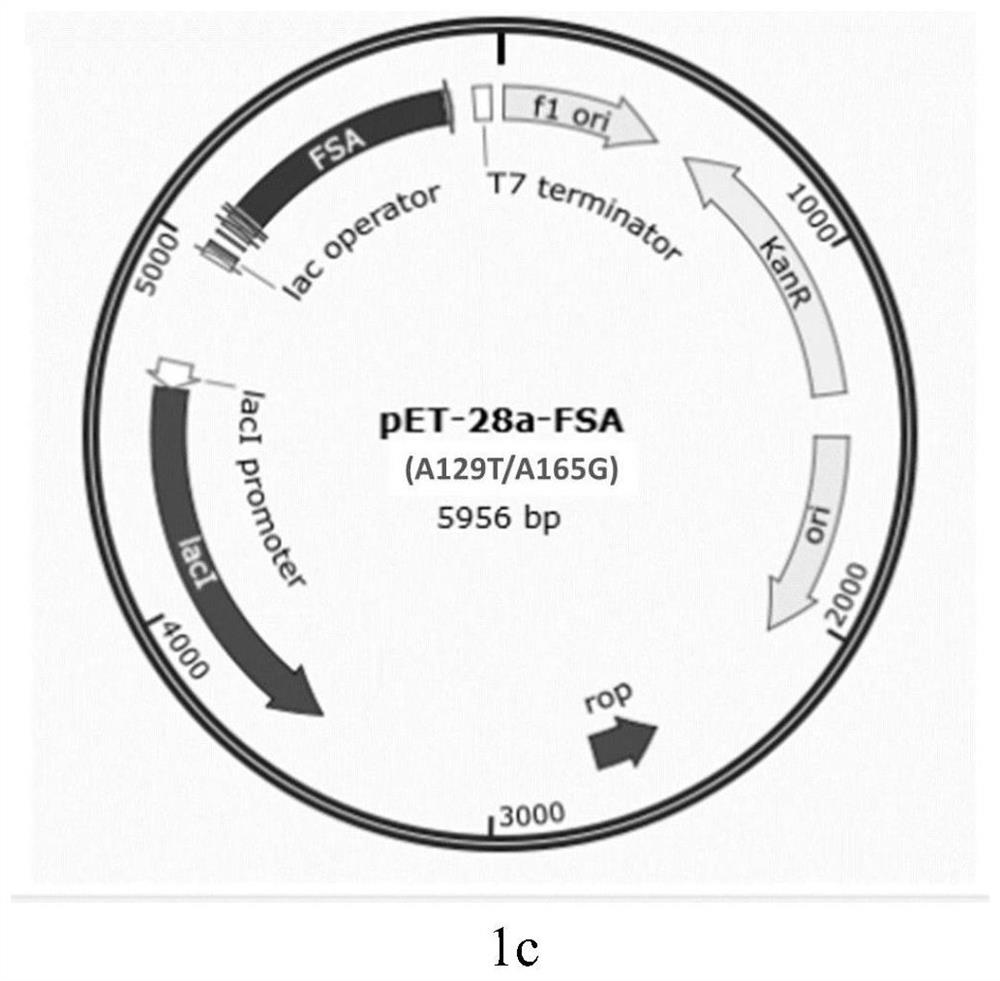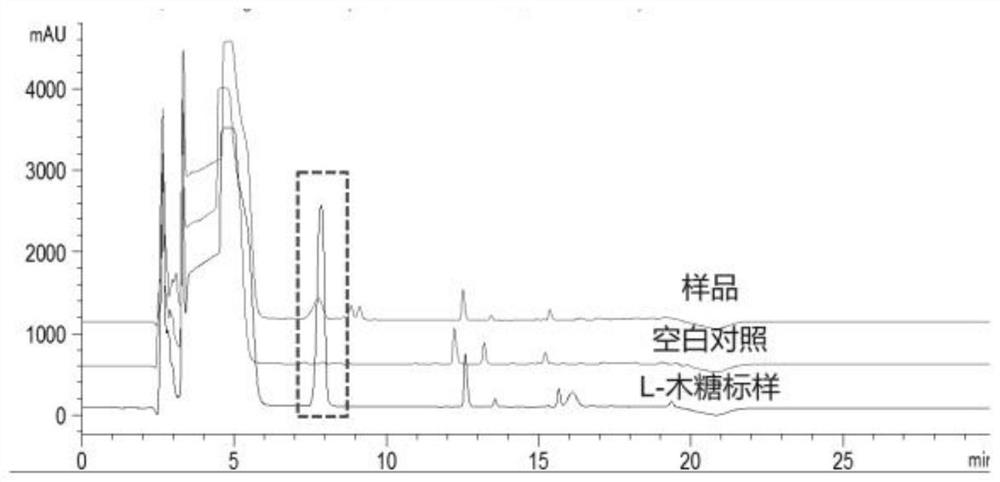Method for biosynthesizing xylose
A biosynthesis and xylose technology, applied in the field of bioengineering, can solve problems such as low conversion rate, and achieve the effects of high conversion rate, simple production process and mild reaction conditions
- Summary
- Abstract
- Description
- Claims
- Application Information
AI Technical Summary
Problems solved by technology
Method used
Image
Examples
Embodiment 1B
[0039] Embodiment 1BFD, GALS, FSA gene acquisition, vector construction
[0040] The source of the BFD (benzoylformate decarboxylase) gene is Pseudomonas putida, and its amino acid is shown in SEQID NO.1. Under the premise of not changing the amino acid sequence of BFD, the codon of the above wild-type gene is replaced with the E. coli preference (High-frequency use) codons, after codon optimization, the gene sequence has Escherichia coli preferred codons, and its gene sequence is shown in SEQ ID NO.2. The gene sequence was directly synthesized on the pET-28a vector, located between the restriction site NdeI and XhoI, and the recombinant plasmid was named pET-28a-BFD (such as figure 1 a). In addition, the mutants of BFD also have the function of catalyzing the synthesis of 2-hydroxyacetaldehyde from 1 formaldehyde. The mutants of BFD are listed in the Chinese invention patent application CN201710096307.X (publication number CN106916794A). GALS is a mutant of BFD. Its activit...
Embodiment 2
[0042] The expression of embodiment 2 gene
[0043] In order to detect the enzyme activity of GALS and FSA (A129T / A165G) in vitro, the enzyme was expressed and purified in Escherichia coli.
[0044] (1) The Escherichia coli expression recombinant plasmids pET-28a-GALS and pET-28a-FSA(A129T / A165G) were respectively transferred into E.coli BL21(DE3) to obtain recombinant bacteria. Positive clone selection (Kan+, 100 mg / mL) was carried out on a kanamycin-resistant plate, and cultured overnight at 37°C;
[0045] (2) Pick a single clone into 5 mL LB liquid medium (Kan+, 100 mg / mL), and culture at 37° C. and 220 rpm until the OD600 is 0.6-0.8. Transfer the bacterial liquid in 5mL LB medium to 800mL 2YT medium (Kan+, 100mg / mL), and cultivate to OD at 37°C and 220rpm 600 When the temperature is 0.6-0.8, cool down to 16°C, add IPTG to a final concentration of 0.5mM, and induce expression for 16h;
[0046] (3) The above-mentioned cultured bacteria liquid is collected in the bacteria ...
Embodiment 3
[0048] Example 3 protein purification
[0049] (1) Bacteria destruction: use a high-pressure and low-temperature crusher to destroy bacteria twice at a pressure of 1200 bar and 4°C. Centrifuge at 10000rpm for 45min at 4°C;
[0050] (2) Purification: the supernatant was suction-filtered through a 0.45 μm microporous membrane, and then purified by nickel affinity chromatography. The specific steps were as follows:
[0051] a: column balance: before hanging the supernatant, first use ddH 2 O washes 2 column volumes, then equilibrates 1 column volume of Ni affinity chromatography column with protein buffer;
[0052] b: Sample loading: slowly pass the supernatant through the Ni affinity chromatography column at a flow rate of 0.5mL / min, repeat once;
[0053] c: Elution of impurity proteins: wash 1 column volume with protein buffer, and then use 50mL protein buffer containing 50mM and 100mM imidazole to elute strongly bound impurity proteins;
[0054] d: Elution of the target prot...
PUM
 Login to View More
Login to View More Abstract
Description
Claims
Application Information
 Login to View More
Login to View More - R&D
- Intellectual Property
- Life Sciences
- Materials
- Tech Scout
- Unparalleled Data Quality
- Higher Quality Content
- 60% Fewer Hallucinations
Browse by: Latest US Patents, China's latest patents, Technical Efficacy Thesaurus, Application Domain, Technology Topic, Popular Technical Reports.
© 2025 PatSnap. All rights reserved.Legal|Privacy policy|Modern Slavery Act Transparency Statement|Sitemap|About US| Contact US: help@patsnap.com



